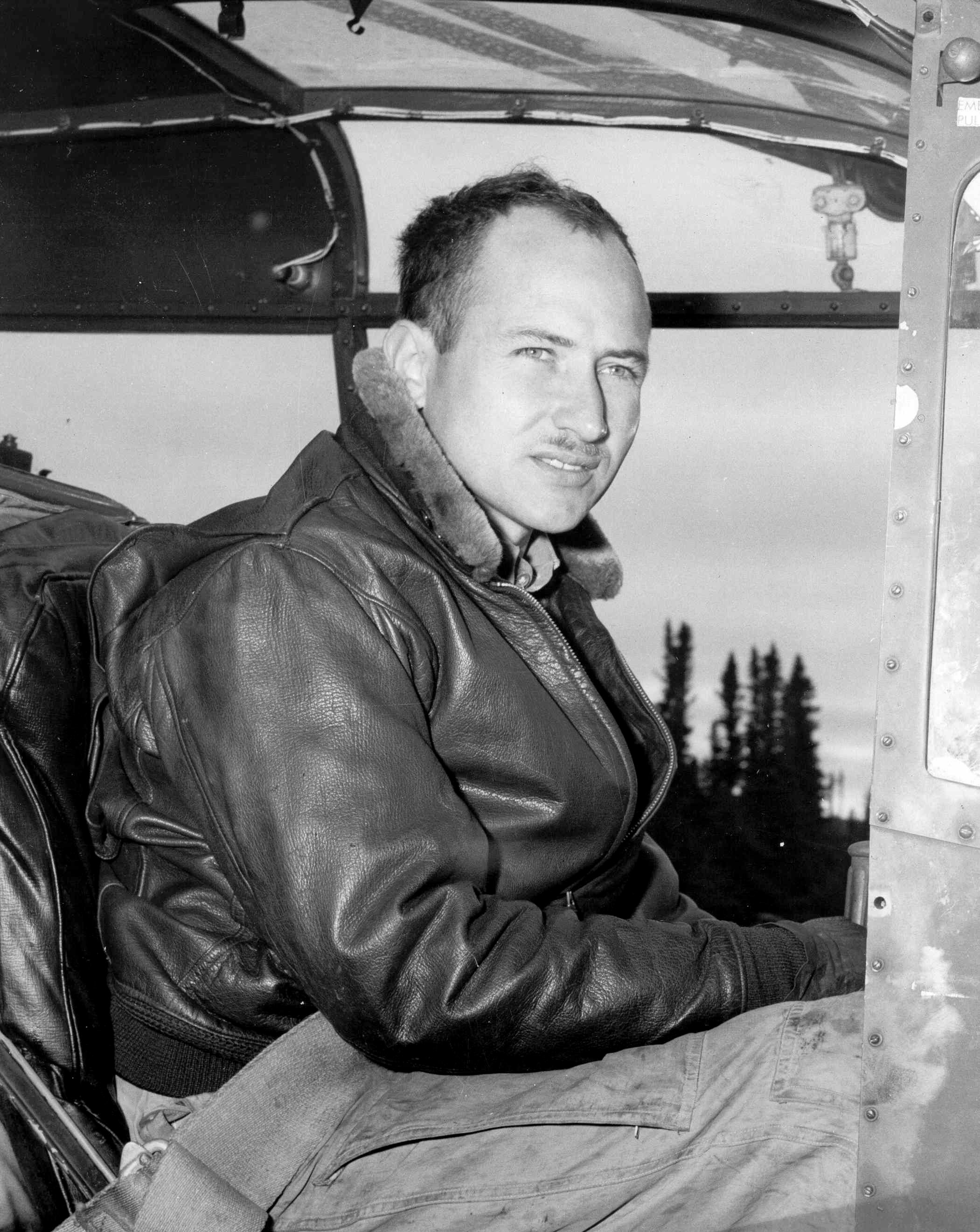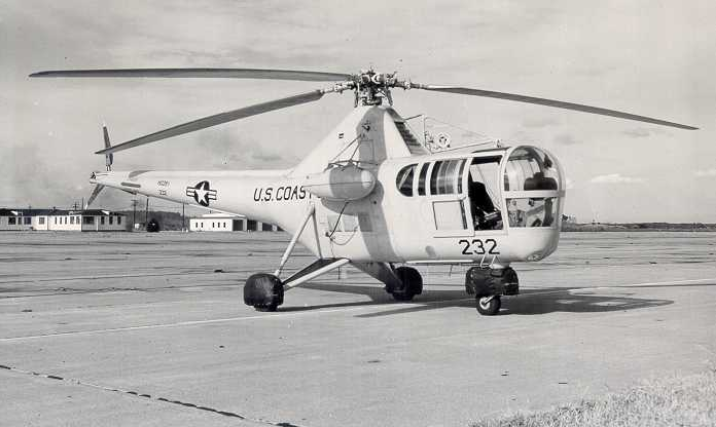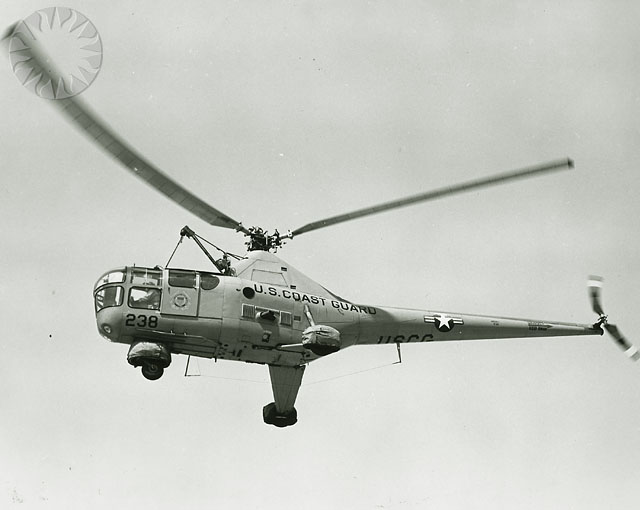

Lieutenant Graham was the first Coast Guard pilot to fly a helicopter from a ship.¹ On 16 January 1944, he flew a Sikorsky HNS-1, Bu. No. 46445,² from the deck of a British freighter, SS Daghestan, while in convoy from New York to Liverpool. After 30 minutes, he returned to the freighter. He was a pioneer in the use of the helicopter by the Coast Guard and the Navy.


The main rotor consisted of three fully-articulated blades built of metal spars and plywood ribs and covered with two layers of fabric. (All metal blades soon became available.) The three bladed semi-articulated tail rotor was built of laminated wood. The main rotor turned counter-clockwise, as seen from above. (The advancing blade is on the helicopter’s right.) The tail rotor was mounted on the helicopter’s left side in a pusher configuration. It turned clockwise as seen from the helicopter’s left.
The helicopter’s fuselage was 41 feet, 7.5 inches (12.687 meters). The main rotor had a diameter of 48 feet (14.630 meters) and tail rotor diameter was 8 feet, 5 inches (2.2.565 meters) giving the helicopter an overall length of 57 feet, 1 inch (17.399 meters). It was 13 feet, 1.5 inches (4.001 meters) high. The landing gear tread was 12 feet (3.7 meters).
The S-51 had an empty weight of 4,050 pounds (1,837.05 kilograms) and maximum takeoff weight of 5,500 pounds (2,494.76 kilograms). Fuel capacity was 100 gallons (378.5 liters).

The S-51 had a maximum speed (Vne) of 107 knots (123.1 miles per hour/198.2 kilometers per hour). Range was 275 miles (442.6 kilometers). The service ceiling was 14,800 feet (4,511 meters). The absolute hover ceiling was 3,000 feet (914.4 meters).
Sikorsky built 220 helicopter of the S-51 series.

¹ On 6 and 7 May 1943, Colonel Hollingsworth Franklin (“Frank”) Gregory, U.S. Army Air Corps, made 23 landings and takeoffs from the tanker SS Bunker Hill in Long Island Sound, flying the Army’s Vought-Sikorsky XR-4, 41-18874. Please see TDiA at: https://www.thisdayinaviation.com/6-7-may-1943/
² ex-U.S. Army YR-4B, serial number 42-107239
© 2017, Bryan R. Swopes